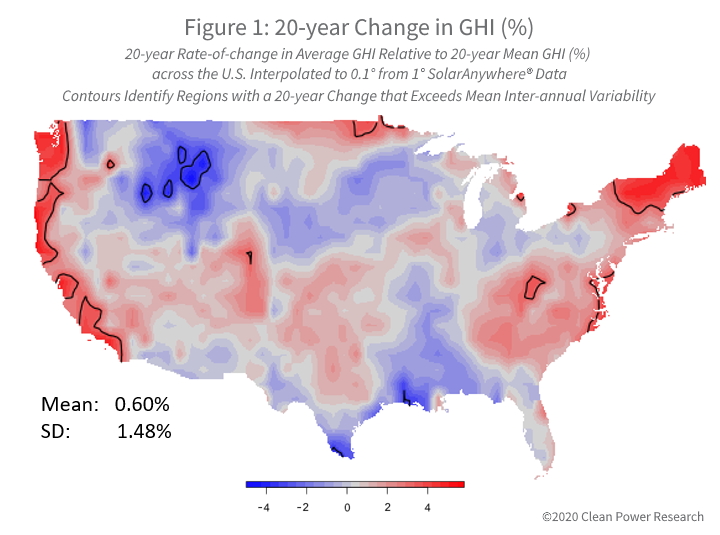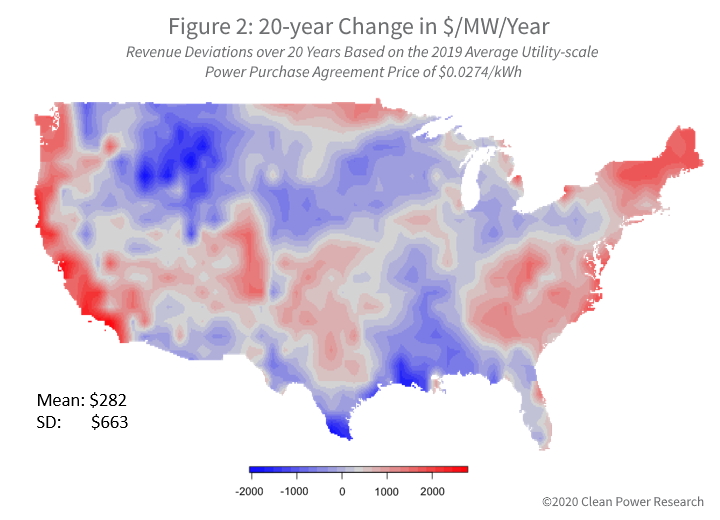In recent years, we reported on lower-than-expected solar energy production in the Eastern U.S., corroborating PV plant owner observations using SolarAnywhere® insolation data. This prompted us to ask the questions:
- How does this recent weather activity compare to 20-year solar resource trends?
- What is the impact on the solar industry from a bankability, performance assessment and planning perspective?
To answer these questions, we used SolarAnywhere Data to investigate 20-year trends in global horizontal irradiance (GHI) and clear-sky GHI for every latitude/longitude pair in the continental U.S. We also evaluated the changes in GHI attributable to changes in aerosol optical depth (AOD). We then quantified the trends in potential kWhAC/kWDC for PV across the same regions.
Implications for solar developers & financiers
The findings show that for most of the U.S., GHI and associated revenue are minimally affected by irradiance trends over this 20-year period. The exceptions are illustrated in Figure 1, which show how the 20-year change in GHI is trending more significantly in the northern Rocky Mountains (to -4%) and along the West Coast and New England (to +4%). Figure 2 shows the 20-year change in $/MW/year with a mean less than $300 per year.


These 20-year changes reflect a general brightening across the continental U.S. on average, with the mean being greater than zero; however, they are smaller than the inter-annual changes expected at any given location within the region. The change in revenue from one year to the next is greater than the overall change in revenue across 20 years.
This research validated previous studies that show that clear sky GHI in some areas—such as east of the Mississippi—have been positively impacted by recent drops in air pollution. For long term investors, understanding these solar resource trends could affect how a PV plant is valued 10-50 years into the future.
Dive deeper into solar resource trends
To learn more about this study and methodologies used, we’ve detailed the findings in both a research paper1 and an on-demand presentation, originally presented at the 2020 Virtual IEEE Photovoltaic Specialists Conference.
Get started evaluating your solar project
Solar developers and owners can confidently analyze the multi-decade weather trends impacting solar resource and project value with SolarAnywhere. With the incorporation of dynamic AOD data and extensive model validation, SolarAnywhere is uniquely consistent across 22+ years of historical data.
